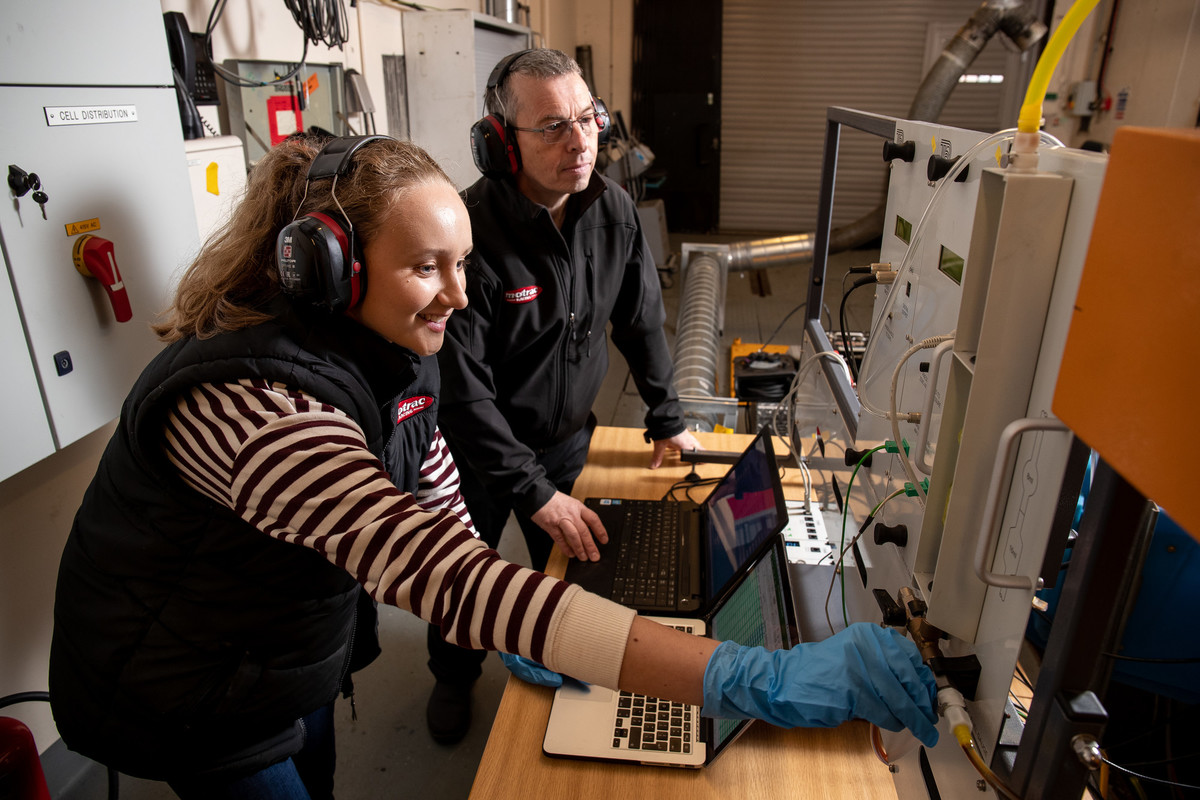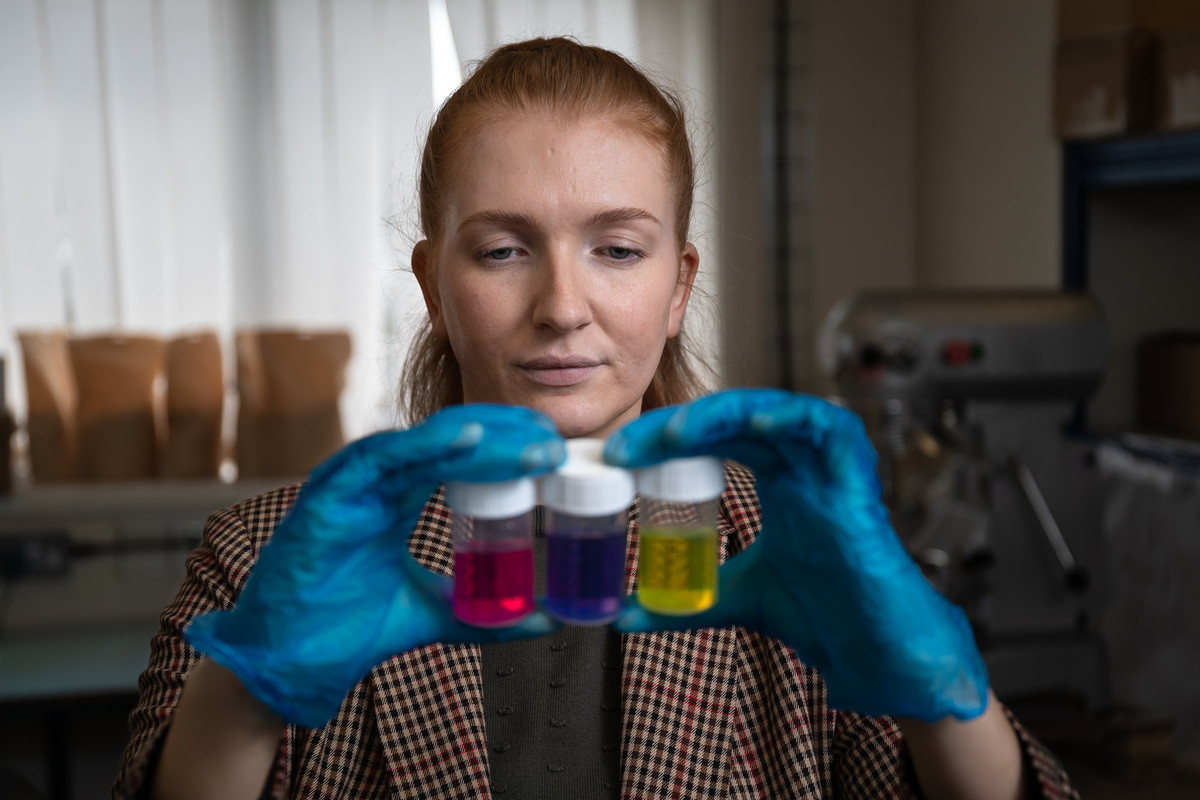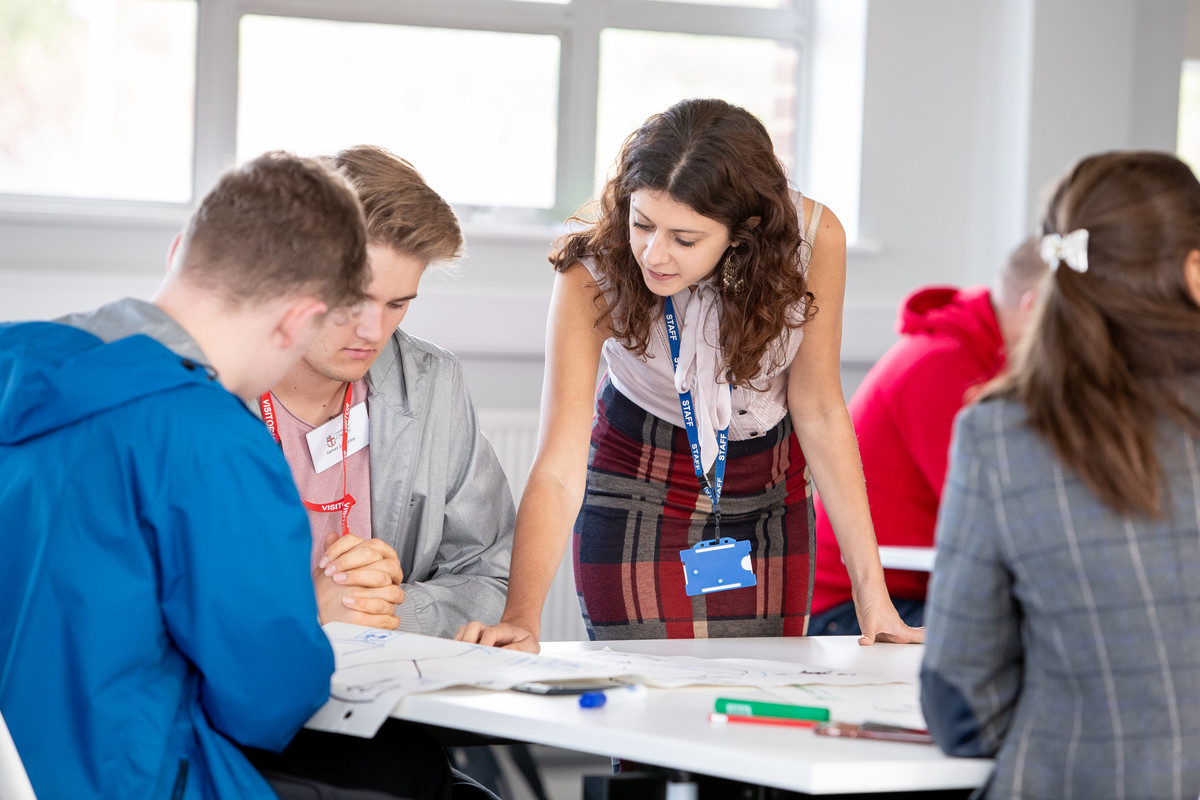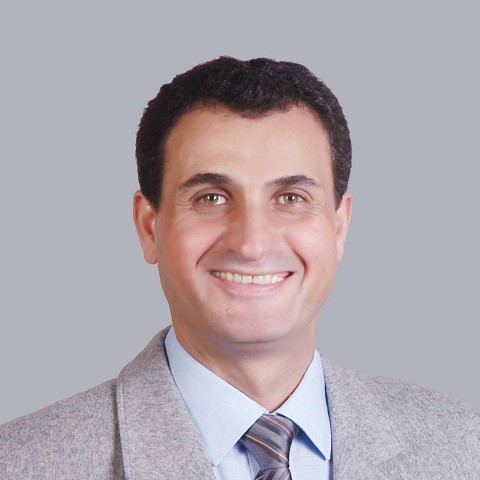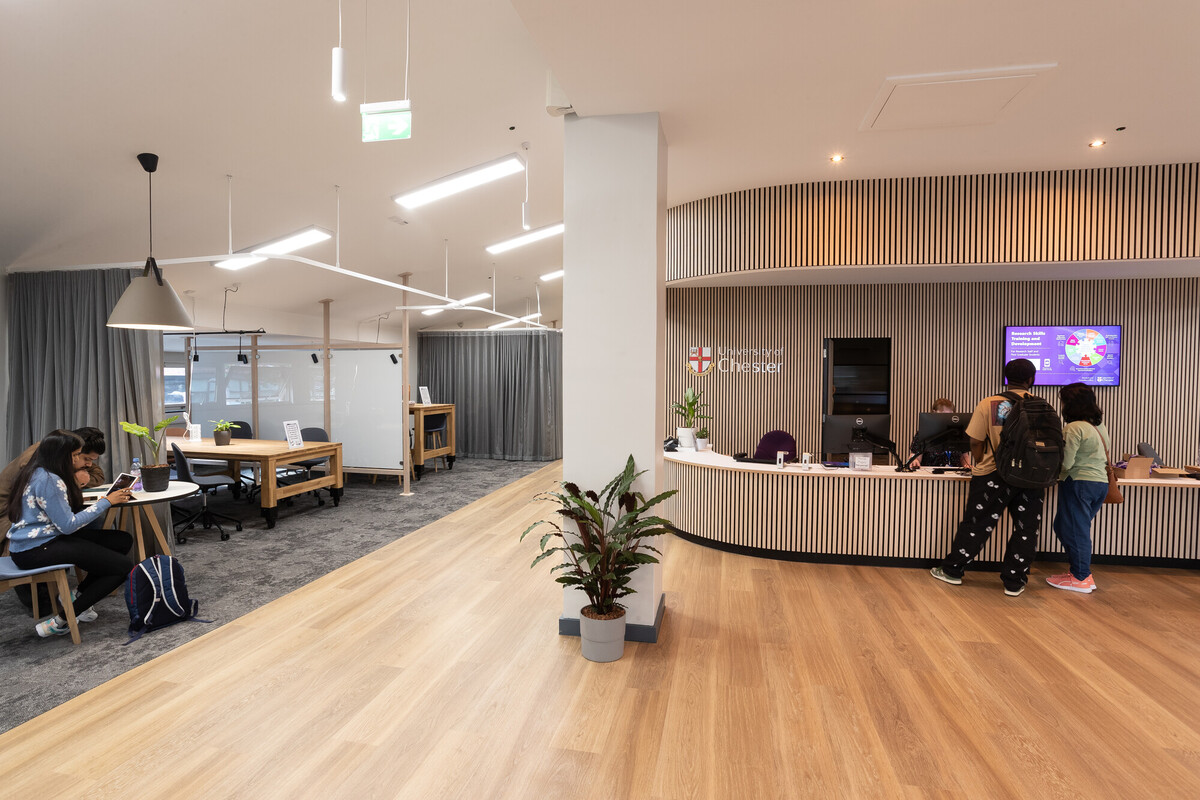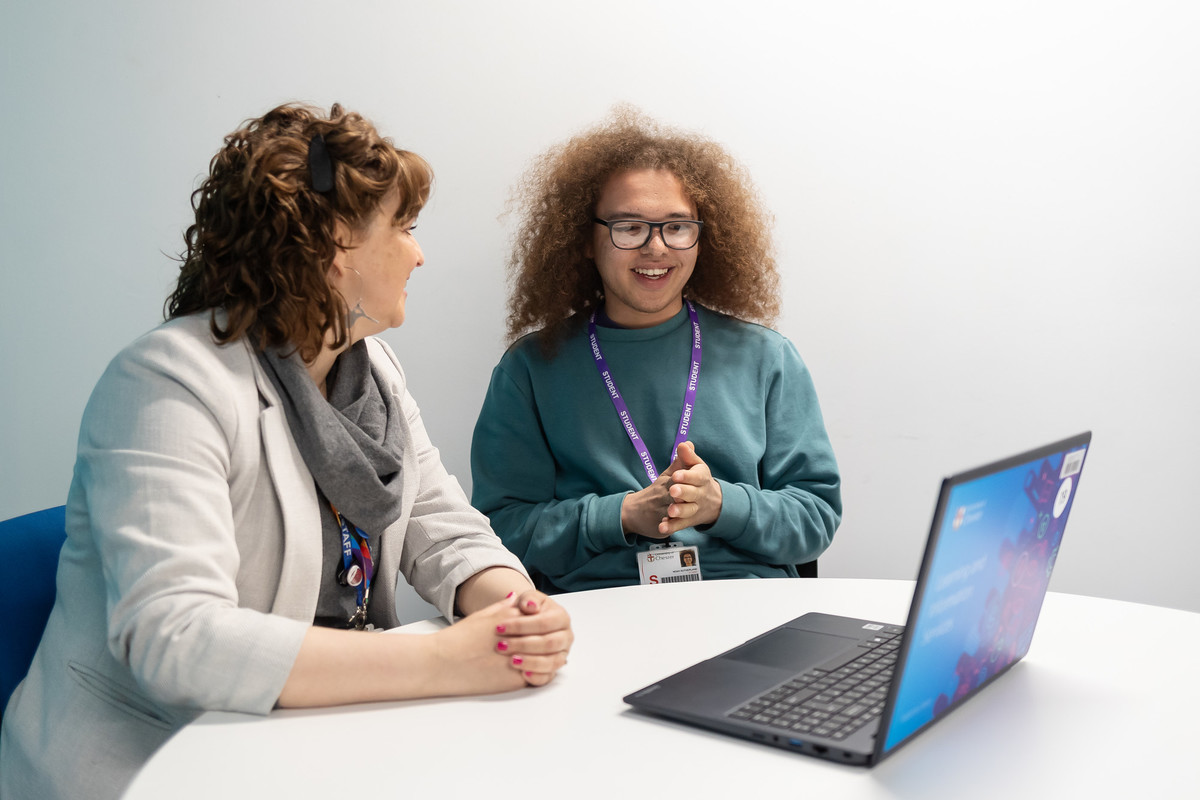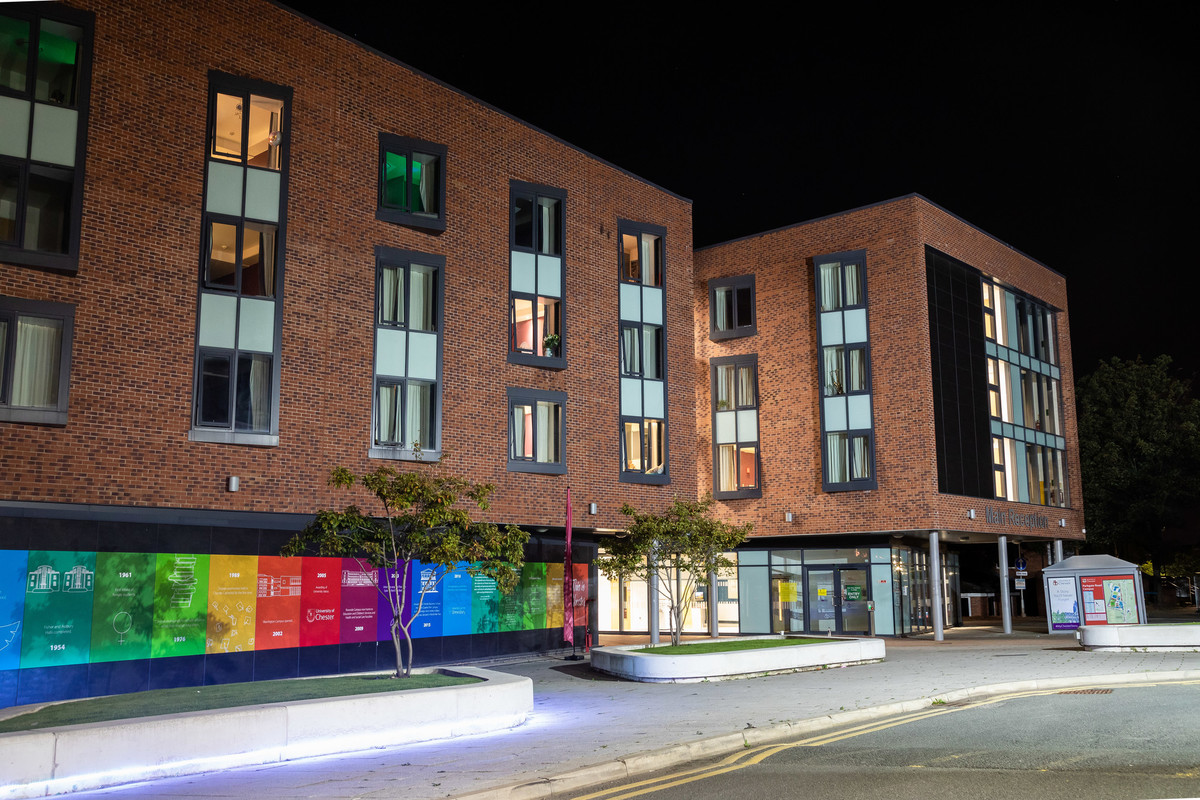Chemical Engineering MEng
.jpeg)
.jpeg)
Accreditations
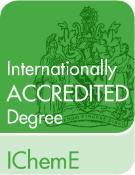
You are viewing Course summary
Course Summary
Chemical engineers develop innovative processes to turn raw materials into useful products such as fuels, plastics, foods and medicines. On this course you will learn the key set of chemical engineering principles and understand how to use them for a huge range of applications, such as eliminating harmful emissions of greenhouse gases.
Our BEng and MEng degrees are fully accredited by the IChemE, and have been designed in consultation with major recruiters of chemical engineering graduates. We have a strong, supportive culture underpinned by interactive, problem-based learning and research-active faculty. In addition, every student has a personal academic tutor, who will support the student in both the academic and practical aspects of university life.
Preparing students for professional success is a key part of our mission. At Chester, all chemical engineering students complete work placements as an integral part of their degree. Opportunities to develop professional skills are embedded throughout the degree programmes and good staff-to-student ratios help students build confidence, for example, in giving presentations and participating in class.
What You'llStudy
You will study the essential chemistry, thermodynamics, fluid mechanics, biotechnology, materials processing and mathematical methods needed to understand modern chemical engineering.
Module content:
University Skills
- Working in teams: roles and responsibilities, record-keeping, survival skills, peer assessment
- Making and monitoring a plan
- Report writing: technical and laboratory reports, structure, content, grammar, the importance of accurate referencing and avoidance of plagiarism
- Effectively search a range of different information sources and critically evaluate for appropriateness for academic use. Understand the nature of research journal publishing and the importance of primary research findings to study of scientific/technology disciplines.
Professional Skills
- Introduction to professional ethics
- The role and responsibilities of the scientist and the engineer in society and in protecting the environment
- The inter-disciplinary nature of engineering.
- CV and cover letter writing
The Design Process
- The design process: introduction to the key stages of research, concept, feasibility, requirements, preliminary design, detail design, production.
Module aims:
The purpose of this module is to ease the transition from school to university by setting the multi-disciplinary context and expectations of degree courses and careers in engineering and natural sciences. Students will be introduced to design, which is the integrating theme that runs throughout engineering degrees, and has great relevance to scientists.
Students will be introduced to the transferable study skills that they will develop throughout their university career. In particular, they will develop their communication skills, team-working skills, and they will understand the need to take responsibility for their own learning.
Module content:
Mathematics
- Introductory review: arithmetic, algebra, notation
- Elementary Functions: relations, functions, standard functions, hyperbolic functions, limits
- Solving Equations: linear, quadratic, simultaneous, polynomial, inequalities
- Trigonometrical functions: identities, equations and engineering applications
- Complex Numbers: concept, arithmetic, De Moivre’s theorem, regions in the complex plane
- Matrices: matrix algebra, determinants, inverse, transformations, notation
- Ordinary Differentiation: techniques, maximum and minimum values, higher derivatives, applications
- Partial Differentiation: functions of two variables, partial differentiation, small increments and differentials
- Integration: techniques, standard integrals, integration by parts, partial fractions, trigonometric functions, analytical techniques, Simpson's rule, applications (e.g. area, mean value, centroids, RMS, volumes of revolution)
- Vectors: vector algebra, cartesian coordinates, scalar and vector product
- Linear Algebra: Gauss elimination, Gauss-Jordan method, iterative method
- Sequence and Series: infinite, convergent, divergent, Standard, Taylors, Mclaurins and Binomial series, approximate and limiting values
- Differential equations
Computer Workshops
- Selected areas of the syllabus will be taught at the computer. These sessions will explore the mathematical technique, rather than use of software, so fully guided examples based on engineering or natural science problems will be provided. Students will begin to identify the commonality of equations describing engineering systems.
Design
- Use of mathematics in establishing/evaluating solutions.
Module aims:
A good mathematical grounding is essential for all scientists and engineers. The mathematics in this syllabus provides the foundation for deeper analysis and understanding of scientific and engineering subjects, and enhances the student’s ability to make sound judgements regarding the science and technology that they will use in the course of their career. Wherever possible, mathematical theory is taught by considering a real example, to provide students with the context for the mathematical tools they will use. Solutions are considered by both analytical and numerical techniques. Where basic principles are involved, some proofs will also be taught.
Module content:
Introduction to Physical chemistry
- Introduction to reaction kinetics
- Thermochemistry
- Chemical equilibria
- Gibbs energy and entropy
Introduction to Organic Chemistry
- Organic nomenclature, structure and reactivity
- Introduction to fundamental reaction mechanisms
Introduction to Inorganic Chemistry
- Introduction to structure and bonding in inorganic chemistry
- Structure of simple solids and materials
- Acids and bases
Introduction to Analytical Chemistry
- Introduction to concepts in measurement
- Standardisation and calibration
- Introduction to qualitative and quantitative analysis, including dealing with experimental uncertainty.
Practical chemistry
- Experimental techniques and laboratory safety
- Recording observations and writing reports
- Understanding experimental uncertainty
Module aims:
The Chemistry Fundamentals module aims to provide a broad introduction of the basics of theoretical and practical chemistry across organic, inorganic, physical and analytical chemistry. The module is evenly split between practical and classroom and will introduce the basics techniques of laboratory chemistry and an introduction to recording experimental data and writing of reports apply the theories introduced in the classroom and the directed reading.
Module content:
Cells and biomolecules
- Prokaryotes and cellular organisation in eukaryotes.
- Structure and function of subcellular organelles.
- Transcription and translation.
- Structure and function of biological macromolecules.
- Major classes of biological molecules - carbohydrates, lipids, proteins, nucleic acids.
- Structure and function of proteins and enzyme catalysed reactions.
- Stoichiometry and kinetics of microbial growth.
Metabolism and signalling
- Energy and carbon metabolism of autotrophs, heterotrophs, lithotrophs.
- Principle pathways in cellular catabolism and anabolism. (Glycolysis, TCA cycle, calvin cycle, protein biosynthesis).
- Thermodynamics of oxidative phosphorylation and electron transport reactions coupled to cofactors (ATP and NADH).
- Control and regulation of metabolic flux.
- Cell membranes and signalling pathways.
Cell factories and biotechnology
- Major products of modern biotechnology
- Key bioprocessing operations used in commercial product manufacture including: Upstream cell and media production including recombinant DNA technology and genetic engineering processes of chemical and physical transfection; Bio-reactor types; Fermentation and growth kinetics including scalability / upscaling; Purification; Cell disruption; Concentration and harvesting
- Metabolic engineering and synthetic biology.
Module aims:
The material on Cells and biomolecules provides the necessary introductory background information to acquaint students with molecular bioscience relevant to modern biotechnology and bioprocesses rather than physiological biology at the organism level.
An understanding of cell Metabolism and signalling is essential for modern biotechnology. In this part of the module, students will be imbued with an appreciation of the unifying features of the main metabolic networks common to life. The control exerted over these metabolic networks via signalling and regulation of gene expression is also covered in some detail since this is a prerequisite for cell engineering strategies which are developed in the final part of the module - Cell factories and biotechnology. This final material looks at the full range of existing bioprocesses – some of which are quite traditional – but also introduces cutting edge approaches of modern genomics and computational techniques.
Module content:
Essential Physics for Chemical Engineers
- Dimensions, units and conversions
- Introduction to fluid flow in pipes
- Stream composition
Design and Analysis of Processing Systems
- Chemical process diagrams
- Batch and continuous processing
- Material balances
Introduction to Chemical Reactors
- General reactor design principles
- Reactor types
- Batch, semi-batch and continuous reactors
- Reactor performance
- Reactor heating and cooling
Introduction to Physical Processing and Separations
- Rheology of simple fluids and complex mixtures.
- Mixing and pumping of fluids, and fluid flow in pipes
- Main separation processes and their characteristics
- Physical separation: membranes.
Principles of Safe and Sustainable Processing
- Introduction to safety and risk assessment.
- Creating and maintaining a safety culture.
- Incorporating sustainability in process design.
- Life cycle assessment
Manufacturing
- Manufacturing performance indicators and improvement strategies.
- The four V's
- Types of production, categories of product
- Layout of production processes
Module aims:
The aim of this module is to provide an application informed introduction to the key concepts of chemical engineering and also to emphasise the distinction from other engineering disciplines (e.g. mechanical and electrical) that are focussed on discrete parts manufacturing rather than materials processing. This module also introduces students to working and presenting in groups.
Essential Physics for Chemical Engineers provides the relevant principles of physics underpinning physical materials processing while an Introduction to Chemical Reactors introduces key concepts for equipment design based on Level 3 chemistry concepts.
Design and Analysis of Processing Systems introduces simple balance equations around processing units and methods for sizing continuous units based on driving force, residence time
etc. The Principles of Safe and Sustainable Processing is illustrated by the study of real processes and historical incidents. These foundations for the continuing themes of safety and design are further developed at each level of learning.
Finally, to emphasise the interdisciplinary nature of engineering, the topic of Manufacturing is introduced to highlight production at the interface of chemical, mechanical and electrical engineering (e.g. packing). The appropriateness of established methods of operations analysis to continuous processes involving fluid flow, tanks
etc. is explored.
Module content:
- Basic definitions; energy, working fluid, continuum, property, systems, surroundings, open and closed systems, phase, state, equilibrium, process, cycle.
- Zeroth Law of Thermodynamics: temperature scales.
- Perfect gases, ideal gas equation of state, real gases, compressibility factor, van der Waals equation of state, virial coefficients
- Work and heat definitions, path functions, types of work, sign conventions, definite integrals
- First Law of Thermodynamics
- Internal energy, enthalpy, constant specific heats, specific heat variation with temperature
- Polytropic processes
- Properties of pure substances; changes of state, sub cooled, saturation and superheated properties, use of tables, phase diagrams.
- First law analysis of systems, cyclic processes, closed systems, open systems (steady and unsteady flow), application to engineering equipment, internal combustion engines.
Module aims:
Thermodynamics is a basic science that deals with energy interactions in physical systems. The purpose of this section is to study the relationship between heat (thermos) and work (dynamics). A range of real-world applications are presented to give students a feel for scientific and engineering practice and an intuitive understanding of the subject matter.
Module content:
Heat Transfer
- Heat conduction and Fourier's Law
- Convection and correlations for heat transfer coefficients
Fluid Mechanics
- Basic definitions and properties: laminar, turbulent, transition flow, boundary layer, units
- Fluids at rest and applications in pressure measurement; pressure distribution over plane and curved surfaces
- Static, stagnation and dynamic pressure, centre of pressure, pressure measurement
- Introduction to the study of flowing fluids and the special case of Bernoulli's equation including applications in flow measurement (free jets, confined flows, flow rate measurement), control volume analysis
- Streamlines, stream tubes and particle paths and the physical interpretation of the Bernoulli equation
- Introduction to control volume analysis
- The conservation principles for open systems and illustrate the applications to simple fluid systems and devices
Module aims:
Heat Transfer
An important tool for any engineer is the ability to identify and maintain mass and energy budgets for engineering systems. This module introduces the concept of an engineering system, and students are introduced to the techniques they will require to solve and analyse a process.
Fluid Mechanics
Fluid mechanics is the branch of applied mechanics that is concerned with the statics and dynamics of liquids and gases. The analysis of the behaviour of fluids is based upon the fundamental laws of applied mechanics, which relate to the conservation of mass-energy and the force-momentum equation. However, instead of dealing with the behaviour of individual bodies of known mass, fluid mechanics is concerned with the behaviour of a continuous stream of fluid.
The aim is to deepen your understanding of the chemical and physical principles required for safe design and operation of process plants.
Module content:
Mathematics and Modelling
- Statistical methods; distribution, sampling, statistical inference, estimation from a sample, hypothesis testing, significance testing.
- Matrix Eigen value problems, with application to solutions of Ordinary Differential Equations.
- Laplace transforms for solution of Ordinary Differential Equations.
- Fourier series approximation of periodic functions.
- Solution techniques for partial differential equations including the heat equation.
Numerical Modelling and Computation
- Construction of algorithms in high-level programming languages including, variables, arrays, operators and expressions, data input and output, flow control and functions.
- Implementation of numerical methods using MATLAB.
- Numerical solution of ordinary differential evolution equations using Euler's method and the Runge-Kutta methods.
- Introduction to Optimization; Optimisation of functions of several variables, with and without constraints.
- Representation of engineering problems as mathematical optimisation problems and solution using Excel Solver.
Module aims:
The purpose of this programme of mathematical study is to ensure that students are competent in calculations using a range of mathematical tools. The content will extend the student’s analytical skills by introducing more advanced topics that are required parts of the modern engineers skill set, and enhance their ability and confidence to make sound judgements.
Module content:
Gas absorption
- Henry’s law and analysis of mass transfer using Whitman Two Film theory.
- Integration of elemental mass balance equation and introduction of concepts of NTU and HTU.
- Gas absorption with reaction.
- Design equations for stripping columns.
Distillation
- Vapour-liquid equilibrium, ideal stage concept and material / energy balance equations for binary systems.
- Use of McCabe-Thiele plots for binary systems.
- Calculation of boiling and dew point temperatures and design equations for multicomponent mixtures.
Solvent extraction
- Triangular diagrams for ternary mixture equilibrium data.
- Ideal stage concept.
- Material balances and graphical analysis of counter-current multi-stage processes.
- Solid-liquid extraction processes.
Solids separation
- Applications involving solids separation and associated equipment.
- Filtration: general principles of mathematical analysis.
- Batch filtration and continuous rotary filters.
- Centrifuges, cyclones and hydrocyclones.
Drying
- Types of industrial dryers.
- Humidity, mass balances and use of psychrometric charts.
- Adiabatic dryers and use of drying curves.
Module aims:
Separation processes is perhaps the defining part of the chemical engineering curriculum. This module introduces design methods and practice for a range of key unit operations for physical separation of solid and liquid components. An aim of this module is to build on the concepts of equilibrium and mass transfer driving force developed in level 4 in order to build knowledge and understanding of equilibrium stage operations for downstream refining and purification operations. Another aim of this module is to give students the appropriate methods and equations to analyse and design continuous and batch equipment for chemical and physical separations.
Module content:
- Second Law: treatment of reversible and irreversible processes, corollaries of second law, definitions of entropy and isentropic processes
- Mass and Energy Transfer:Extension of principles to non-steady-state and reacting systems
- Combustion: Thermodynamics of reacting systems. Definition of standard states. First law analysis of reacting systems including dissociation. Use of combustion tables, solution of various types of combustion problems
- Cycles: Different types of engineering cycles. Methods of improving cycle efficiency
- Energy Use: Theoretical limits on energy efficiency. Sources and sinks and implications for environment. Opportunities for and implications of energy efficiency.
- Chemical thermodynamics - equations of state and phase equilibria for pure fluids, phase equilibria in fluid mixtures, reaction equilibria
Module aims:
Thermodynamics is the science that deals with energy interactions in physical systems. The purpose of this module is to extend the basic principles heat, work and energy then apply this knowledge to real engineering problems, and also to introduce chemical thermodynamics - the interaction of heat and work with changes of state and chemical reaction.
Module content:
- Design and analysis of heat transfer devices using conduction, convection and radiation
- Design principles for engineering flow systems
- Mathematical analysis of boundary layers
- Fluid flow in different conditions, e.g. Compressible flow, open channel flow, pipe networks
- Turbomachinery: propellers, pumps and turbines
- Introduction to Computational Fluid Dynamics
Module aims:
The understanding of fluid mechanics is fundamental to much of chemical and mechanical engineering, and this module seeks to develop extend relevant knowledge of fluid mechanics to the point that real world problems can be addressed. Almost every branch of science and engineering includes some kind of heat transfer problem, and there is a need for engineers to have some background in this area. This module aims to provide an introduction to the basic principles and practical applications of conduction, convection and radiation heat transfer.
Module content:
Introduction to Chemical Analysis
- Instrumental vs. classical techniques.
- Detection limits, sensitivity, dynamic range, precision and accuracy.
- Statistical analysis
- Elemental Analysis: Atomic absorption spectroscopy. X-ray fluorescence spectroscopy. Inductively coupled plasma techniques.
Molecular Spectroscopy
- UV & visible spectroscopy.
- Mass spectrometry.
Separations and Chromatography
- Gas & liquid Chromatography.
- Hyphenated techniques: GC-MS, LC-MS, GC-GC.
Module aims:
Introduction to Chemical Analysis
Students will be introduced to the concept of chemical analysis as a structured approach involving element identification, chemical structure determination, and (in the case of solids) spatial location. The dominance of instrumental techniques in the modern analytical laboratory is emphasised, and illustrated by the varying approaches to elemental analysis depending upon the sensitivity and detection limits required.
Molecular Spectroscopy
The content of this section of the course forms a basic introduction to the three major techniques of molecular spectroscopy.In all three cases, the content covers the underlying scientific principles, and introduction to the instrumentation used, and guidance on interpretation of the resulting spectra.
Separations and Chromatography
Separation of complex mixtures into their constituent components is a vital pre-requisite in chemical analysis.Students will be introduced to the principles of liquid and gas chromatography techniques, and the use of these methods in conjunction with molecular spectroscopy (so-called hyphenated techniques) is touched upon.
Module content:
Control
- Introduction
- Modelling systems
- Differential equations
- Linearisation
- Introduction to modelling and simulation for control systems design
- Laplace transforms
- Characteristics of Laplace transforms
- Open loop & closed loop
- Main parts of feedback control systems
- Effects of feedback
- Feedback characteristics
- 1st order system response and characteristics
- PID Characteristics
- PID controller structures
- PID tuning for 1st and 2nd order systems with ZN and RH criterion
- Brief Introduction to practical control implementation
- Introduction to ITEA performance criterion
Simulation
Computer workshops will be provided for hands-on experience in designing control systems using the
MATLAB/SIMULINK software package. Essential features of the control syllabus will be demonstrated through a
collection of example problems.
Laboratories
Students will undertake engineering control laboratory practical with the application of temperature control of a heating, ventilation and air conditioning (HVAC) system.
Module aims:
The aim is to provide a sound underpinning of engineering control theory to serve as a foundation for the third year module
(Process Systems Engineering), where the focus will be on the specific application of control in process industries. Students will be introduced to control in relation to engineering systems, and in particular to develop methods of modelling the control of systems and processes. Techniques are explored with particular reference to common practical engineering problems and their solutions.
Module content:
Flowsheet Analysis and Process Integration
- Concept of Unit Operations as components making up process flowsheets.
- Process flow diagram and P&I diagrams.
- Measured and manipulated process variables.
- Principles of mass balances for complex flowsheets with recycles.
- Energy balances, hot and cold utilities and concept of heat integration.
- Pinch analysis for determination of minimum energy targets.
- Design of heat exchanger networks.
- Conceptual extension of process integration to mass transfer networks.
Process Simulation
- Simulation principles.
- Use of PRO/II for solving engineering problems and analysing the results.
- Thermodynamic methods: available models, selection criteria.
- Building a flowsheet and Managing Process Flow Diagram
(PFD) files. - Simulation of various processes.
Dimensional Analysis and Scale-up
- Examples of physical systems amenable to dimensional analysis: e.g. falling sphere, mass/heat transfer.
- Outline of Buckingham’s Pi Theorem.
- Use of engineering correlations for scale-up.
- Maximising inherent safety for scale-up.
Module aims:
Flowsheet Analysis and Process Integration The process flowsheet is a key tool for analysis and communication for both practising engineers and industrial scientists. By the end of this module, students will be able to understand complex flowsheets and solve plant-wide mass balances building on concepts of single unit mass and energy balances introduced in level 4. The pinch analysis method for heat integration is introduced, laying the foundation for a more general treatment of process optimisation which is an option in level 7.
Process Simulation Process simulation is a highly sought after skill in today’s chemical engineering graduates. This module introduces PRO/II Simulation, which is a professional simulation tool that offers a comprehensive simulation solution for process design and operational analysis. By the end of the module students should be able to understand the circumstances which make the use of software design tools appropriate and necessary, and choose the appropriate tool for a given task. Also to effectively carry out process simulation of various processes, solve engineering problems and analyse the results.
Dimensional Analysis and Scale-up The aim of this teaching is to introduce students to the novel concept of the dimensionless variable as a useful scale-free system property. This will put into context the limited exposure to dimensionless numbers (e.g. Reynolds number) given in level 4. The focus will be on the practical value of engineering correlations for designing process equipment which will be further extended in level 6 as are rules for safe design and operation.
Module content:
Pre-placement:
- Structured approaches to researching, selecting and securing a suitable work placement relevant to the student’s interests and career aspirations*.
- Writing an effective CV. Constructing a letter of application.*
- Interview skills.*
*Note: Students are required to undertake these pre-placement tasks during term 1 level 5, as part of the placement acquisition process and will be supported by the Work Based Learning team and the Careers and Employability department.
Induction Programme and Placement:
- The organisational context: research-informed analysis of the placement organisation’s aims, structure, culture.
- Self- assessment of needs: identification of the range of transferable skills, competencies and attitudes employees need and employers expect graduates to possess. (Employability Skills: e.g. verbal and written communication, analytical / problem solving capabilities; self-management; team working behaviours; negotiation skills; influencing people; positive attitude, resilience, building rapport).
- Devising a strategy for integrating into the workplace and work based teams
- Completion of online assignment tasks covering sourcing and obtaining placement; health and safety procedures in general; general workplace integrity; placement requirements.
During and post-placement: Learning effectively in and from the workplace:-
- Devising and implementing strategies to improve own approach and performance
- Critical analysis/evaluation of approach to skill development and performance in the workplace;
- Influencing the Placement Provider’s appraisal;
- Devising an action plan to develop gaps in transferable skills based on the placement experiences;
Module aims:
This module aims to enhance students’ prospects of gaining graduate level employment through engagement with a University approved work placement**, which will enable them to:
- Develop their understanding of workplace practice and lifelong learning;
- Enhance their work readiness and employability prospects through development of transferable skills;
- Take responsibility for their own learning and acquisition of workplace employability skills;
- Articulate, in writing, their employability skills.
Module content:
- The organisational context: research-informed analysis of the sector’s role, development opportunities or career paths.
- Self- assessment of needs: identification of the range of transferable skills, competencies and attitudes employees need and employers expect graduates to possess. (Employability Skills: e.g. verbal and written communication, analytical / problem solving capabilities; self-management; team working behaviours; negotiation skills; influencing people; developing a positive work attitude, resilience, building rapport with co-workers).
- Devising strategies to improve one’s own career.
- Critical analysis/evaluation of skills already acquired.
- Devising an action plan to address gaps in transferable skills based on organisational analysis and sector opportunities.
Module aims:
This module aims to enhance students’ prospects of gaining graduate level employment, which will enable them to:-
- Enhance their work readiness and employability prospects through identifying relevant transferable skills for their chosen career path,
- Clearly articulate their career plans and take steps to prepare for their first graduate role,
- Take responsibility for their own learning and acquisition of workplace employability skills,
- Articulate, in writing, their employability skills.
You will gain a broader knowledge for technical/strategic decision making.
Module content:
Atmospheric Environmental Science and Protection
- The natural and manmade processes controlling the composition of the atmosphere.
- Protection, mitigation and control of air quality in a modern industrial economy.
- The collection, analysis and interpretation of environmental data.
- The communication of topical issues of environmental quality to different audiences.
Process Safety and Loss Prevention
- Legislation and the responsibility of the Engineer.
- Hazards: Physical, Chemical, Fire.
- Fire Protection.
- Chemical Reaction Hazards.
- Hazard identification.
- Hazard and Operability Studies (Hazop).
- Risk assessment and fault trees.
- Case studies: the causes of incidents.
- Human factors and task analysis.
Module aims:
The aim of this module is to instil in students the regulatory requirements and technical considerations for safely and sustainably designing, operating and decommissioning industrial chemical processes.
The Atmospheric Environmental Science and Protection part of this module looks at natural and industrial contamination in the atmosphere and how it can be analysed and controlled. It also considers the science of important topical issues.
Process Safety aims to prepare graduates for safe professional practice by emphasising the responsibilities of management for safety in scientific and engineering activities and how these can be met technically. Chemical and engineering principles from earlier levels of study are used to understand potential chemical and physical hazards. Finally, real examples of major incidents that have led to new regulation are studied.
Module content:
Chemical Reaction Engineering
- Advantages and industrial uses of different reactor operating modes: batch, semi-batch, continuous, semi-continuous.
- Quantitative description of Batch, PFR and CSTR as ideal reactors and associated mass and energy balances.
- Concepts of conversion, yield and selectivity.
- Concept of Residence Time Distribution (RTD); C(t), E(t), F(t) curves; and calculation of conversion from RTD.
- Real (non-ideal) reactors with industrial examples and calculation of reactor size based on reaction rate.
- Analysis and optimization of multiple reactor configurations: tanks in series, plug flow with recycle
etc. - Isothermal and adiabatic reactors.
- Dispersion model for non-Ideal flow in a tubular reactor.
Catalysis
- General principles of catalysis in terms of reaction energetics.
- Organometallic chemistry and transition metal complexes for homogeneous catalysis exemplified by the Cativa process and Wilkinson’s catalyst.
- Enzyme catalysis mechanisms and examples.
- Derivation of Michaelis-Menten equation for enzyme kinetics.
- Adsorption: mathematical description of physisorption and chemisorption.
- Mechanisms for surface reactions in heterogeneous catalysis (e.g. Langmuir-Hinshelwood, Eley-Rideal).
Solid-Fluid Diffusion and Reaction
- Concept of diffusion controlled reactions.
- Definition and use of effectiveness factor and Thiele modulus.
- Diffusion and reaction in flat slab and spherical pellet.
- Fluid particle reaction kinetics: progressive-conversion and shrinking particle models.
Module aims:
The overall aim of this module is to extend previous chemical knowledge into industrial applications and provide the basis for further self-directed learning to meet the needs for subsequent graduate work.
Chemical Reaction Engineering
The part of the module aims to strengthen and expand the fundamental knowledge of mass and energy balances, reaction kinetics and thermodynamics; and apply this to the design and analysis of chemical reactor systems. This requires the introduction the important new concepts of ideal reactors and residence time distribution.
The teaching of Catalysis extends the molecular understanding of chemical and biological reaction kinetics from level 4. It also gives a practical application of transition metal chemistry discussed in level 5. The industrially important area of heterogeneous catalysis is introduced as a prelude to the final part of the module.
Solid-Fluid Diffusion and Reaction builds on and extends the concept of diffusion controlled chemistry introduced during level 4 by a consideration of reactions in which interaction between a fluid and a solid phase is the controlling factor.
Module content:
Conceptual Process Design
- Stages in process design
- Project structure, organization and documentation
- Product design
Design of Process Equipment
- Materials selection
- Short-cut methods for preliminary design of distillation columns
- Design of separation column internals: packing and trays for distillation and absorption
- Mechanical design of pressure vessels and storage tanks
- Single and multi-stage pumps and compressors
- Design of particle handling and storage equipment
- Design of stirred tanks with heat transfer
- Design of two-phase heat exchangers including reboilers and condensers
Process Economics
- Capital and operating cost estimation for equipment and processes
- Project economic evaluation
Module aims:
The purpose of this module is to deliver core chemical engineering topics not previously covered and with particular relevance to the third year design project. Conceptual Process Design teaches the structure and organization of the design process in the chemical industries. Design of Process Equipment covers the design of various key unit operations including columns and absorbers, reboilers and condensers, as well as ancillary equipment such as compressors, pressure vessels
etc. Guidance on materials selection is also provided. Process Economics provides tools and techniques for the estimation of process/project cost and overall economic performance.
Module content:
Sustainability in Process Design
- The concept of sustainability. Environmental, economic and social criteria. The life cycle approach.
- Process design for sustainability.
- Specific industrial process examples.
Energy from Biomass
- Biomass types and characteristics
- Direct use
- Combustion based processes
- Vegetable oils
- Thermal conversion
- Gasification based processes
- Pyrolysis based processes
- Biological conversion
- Fermentation-based processes
- Anaerobic digestion based processes
- Chemical conversion
- Transesterification to biodiesel
Other Renewables and Associated Low Carbon Technologies
- Solar energy systems
- Solar thermal
- PV
- Wind energy systems
- Water energy systems
- Hydroelectric
- Wave
- Tidal
- Geothermal power generation
- Electrochemical energy conversion and storage
- Fuel Cells
- Batteries
- Other energy storage options
- The Smart Grid
Module aims:
The aim of this module to instil in students the regulatory requirements and technical considerations for designing, operating and decommissioning sustainable industrial chemical processes, and in particular sustainable energy generation systems.
The benefits of embedding Sustainability in Process Design in order to minimise the consumption of scarce material and energy resources is illustrated through the consideration of specific industrial process examples.
Thermal conversion and microbial degradation processes to derive Energy from Biomass is also presented in this module, reinforcing the application of biochemical fundamentals gained at earlier levels. A detailed overview is given of the current and future technologies for deriving power, heat and transportation fuels from biological sources.
Other Renewables and Low Carbon Technologies aims to give an insight into the other main sustainable power technologies. The teaching will draw on physical and engineering principles learned earlier, and will enable participants to critically assess the relative merits and applicabilities of these technologies.
Module content:
Commercial and Economic Operations:
- Organisation of a company: Types of companies, elements of company law, sources of financing.
- Financial environment: Illustrative topics: microeconomics, macroeconomics, inflation, GDP, market structure, monopolies, fiscal policy
- Financial Accounting: Illustrative topics: Source of Finance, Income Statement, Profit and Loss, Balance Sheet, Cash Flow, Ratio Analysis.
- Management Accounting: Illustrative topics: Elements of cost, marginal and standard costs, break-even analysis, overhead absorption, ABC costing, budgets.
- Economics management in operation: Cost classifications, contribution margin and breakeven analysis,
- Project analysis: time value of money, ROI, payback, NPV, IRR, Risk and uncertainty
- Strategic initiatives: Illustrative topics: Target costing, balanced scorecards, throughput accounting, the international dimension of business operations
- Industrial legislation: Illustrative topics: Health and Safety at Work Act, COSHH, risk assessment, elements of contract law, sale of goods, employment and IPR, Tort of Negligence (product safety and liability, professional negligence, neighbour principle)
Professional Ethics
- Professional conduct: the Institutions, chartered status, continuing professional development, discrimination, ethical responsibilities, technology and employment – the changing face of society and the engineer and scientists role
- Embedding sustainable practices within business processes
- Environmental impact of business processes
- Business operation and social responsibility
Module aims:
The aim of this module is to equip students with an awareness of the wider commercial and economic context of engineering operations. Students will gain an understanding of strategic, operational, environmental and ethical issues as they impact and guide the business practice of professional engineers and scientists. Students will apply knowledge and analysis to specific issues and dilemmas affecting individuals and organisations is science and engineering businesses.
Module content:
PROCESS CONTROL
- Classical control reviewed in a Chemical Engineering context
- Process control equipment (instrumentation and valves)
- Control systems on P&I diagrams
- Control strategies in process plant
- The control of common plant items
- Plant start-up and shut-down
- Operator features of control systems architecture
- An introduction to Model Predictive Control
MATHEMATICAL MODELLING
- Process simulation - development of equations and solution techniques (thermodynamic property methods)
- Process simulation - dynamic models for advanced predictive control
- Optimisation for design and operation in the process industries
Module aims:
PROCESS CONTROL
Building on the general control theory provided in SE5044, this module focuses on the specific application of control in the process industries. The student will become familiar with the interpretation of P&I diagrams, the common types of instrumentation, the use of valves, the main conventional control strategies and their application to specific process plant items, the operator features of DCS, SCADA and PLC systems, and the basics of Model Predictive Control.
MATHEMATICAL MODELLING
This will develop practical simulation addressed at Level 5 by showing how mathematical relationships for chemical thermodynamics can be formulated and solved. Dynamic modelling as the foundation for advanced predictive control will be covered. Students will also learn how optimisation can be used for efficient design and operation of chemical plants.
MEng students complete a research project by working on a current engineering problem suggested by our industrial partners. This is combined with other modules that will further prepare you for a career as a professional engineer, including in the pharmaceutical or nuclear industries, and modelling and project management roles.
Module content:
The role of the project manager in the process industries
Project management principles: How to set up and plan a successful project, utilising milestones, preparing for resource limitations and work load planning.
Methods of project control and evaluation.
Evaluating & managing risks associated with projects in the process industries.
Second order project management: addressing the issues of a complex, unstable, uncertain environment
Closing a project and the lessons learned from key case studies and topical real life projects from the process industries.
Current research strands or innovation in project management in the process industries.
Module aims:
By the end of this module, you will be able to apply project management principles to the particular requirements of projects in the process industries. You will be able to create project management structures to plan, track progress, manage risk and take action. You will recognise examples of good and poor practice in projects, and appreciate the advantages and pitfalls of common project management approaches.
Module content:
The design project undertaken in the third year of study is a major piece of coursework that integrates key knowledge and skills acquired elsewhere in the degree programme. It is a challenging exercise that is constructed to be as close as possible to a professional engineering design exercise.
Students must work well in teams, make difficult judgements and display considerable creativity.
The project has two phases, a group phase in which students work in small groups to produce a preliminary design of a specified process, followed by an individual phase in which students focus on particular aspects of the process in more detail.
Phase 1: Group work
Review literature for the product and associated process routes, including background chemistry and technology, markets, environmental constraints, properties of significant materials handled
etc.
Select and justify the process route to be designed.
Generate a process flow diagram
(PFD) indicating all the major unit operations, with an associated process description.
Prepare a conceptual mass balance for the process at the chosen scale of production, incorporating preliminary energy balance calculations where required.
Describe plant operation and control including steady-state, start-up and shut-down.
Review the design to identify significant safety, health and environment (SHE) and sustainability issues.
Phase 2: Individual work
Each student completes a detailed chemical engineering design for a specified major plant item, which at Level 7 will be a non-standard unit operation without standard design procedures and/or requiring advanced chemical engineering theory.
For the major plant item:
Prepare a PFD for the zone local to the major plant item, and review and if necessary develop the local mass/energy balance.
Carry out a process design of the major plant item and prepare data sheets.
Develop an operating and control strategy and a P&ID for the zone local to the major plant item, recognising that the zone is part of the overall plant.
For the complete process:
Complete a HAZOP study (in collaboration with other group members) for a selected node in the process.
Carry out an economic appraisal of the proposed design, including estimates of capital and operating costs and income streams, and a discounted cash flow (DCF) analysis to assess profitability.
Review the design and explore the sensitivity of the economic performance to key assumptions made both in the design itself and in the economic analysis.
Module aims:
The design project provides students with a learning experience that will enable them to carry out both group and independent design practice and to integrate many of the subjects they have studied throughout their degree. Students are expected to plan, research and execute their task while developing skills in critical judgement, independent work and engineering competence. Students will also gain experience in presenting and reporting a major piece of engineering work.
Module content:
There is great flexibility in this module which, being at level 7, is designed to instill in students the confidence to plan and execute a detailed research study to answer an important unresolved question. The research can be experimental, computational, desk-based (e.g. a feasibility or design study) or a mixture of these.
Students can express a preference from a list of projects (titles and short abstracts) compiled by the department based on input from academic staff and industrial contacts. Students are also free to suggest their own projects provided that the department is able to supervise and resource the project, and the student can support the proposal with a convincing research question. The specific content of each project can vary considerably depending on the type of study involved.
This is an individual project in terms of assessment. However this does not preclude groups of students working together on related projects providing the dissertation each author submits is their own and the contribution of the author to the group is sufficient. In addition, the author of each dissertation can refer to joint results achieved with other students, provided these contributions are properly recognised and the appropriate dissertations are cited.
Regular individual or group meetings with the project supervisor throughout the project will ensure that students are able to develop their understanding of the relevant ideas in their chosen subject area.
Projects will typically include: a clear statement of objectives and deliverables; evidence of project planning and time/resource management; a survey of relevant published literature; research methodology (appropriate experiments, use of software tools
etc.); analysis and discussion of results; conclusions relative to the agreed objectives, and identification of further work. The analysis will also include the wider impact and potential application of the work.
The assessment methods for this module will allow the students the opportunity to demonstrate their ability to communicate complex technical information in a clear and unambiguous form.
Module aims:
The research project provides students with a learning experience that will enable them to carry out independent research, and to integrate many of the subjects they have studied throughout their degree. Students are expected to plan, research and execute their task while developing skills in critical judgement, independent work and engineering/scientific competence. Students will also gain experience in presenting, defending and writing up a major piece of research at a level appropriate for an honours degree student.
Module content:
The module considers three key techniques.
Flowsheeting
- The use of steady state flowsheeting simulators for process design and equipment specification.
- Further practical experience with a leading flowsheeting software tool, building on earlier modules.
Discrete event simulation
- The application of discrete event simulation to supply chain design and optimisation.
- Practical experience with a leading discrete event simulation software tool.
Sequential quadratic programming
- The application of sequential quadratic programming to online optimization and active constraint tracking
- Practical experience with a leading sequential quadratic programming software tool.
In each case the student will lean how to:
- Define the scope and granularity of the model
- List information required to build the model
- Build and validate the model
- Use the model to generate solutions
- Report and present results effectively
Module aims:
Expertise in process modelling and simulation is a highly sought after skill in today’s chemical engineering graduates. Despite the appearance of several software systems, this area is still primarily an expert speciality. The aim of this module is to give students the ability to apply process simulation software in three key areas: flowsheeting, discrete event simulation and sequential quadratic programming (online optimisation). In the process students will become familiar with three market-leading software tools through hands-on experience. The ability and experience gained will represent a key addition to students’ skills portfolio in the eyes of many process industries.
Module content:
Nuclear Physics and Safety
- Structure of the atomic nucleus, radioactive decay processes, fission
- Lessons from history: accidents, safety culture and establishing Nuclear Safety and Environmental Cases
Engineering Challenges in the Nuclear Fuel Cycle
- Overview of story of nuclear in UK & generic lessons about Chemical Engineering design
- Nuclear reactor types & nuclear fuel manufacturing
- Commissioning and operations
- Waste retrievals and decommissioning challenges
Water and Wastewater Engineering Design
- Sources of water pollution
- Water quality concepts
- Design and Operation of Water treatment and disinfection processes.
- Biological waste water treatment: design and operation of activated sludge processes.
- Use of industry standard engineering tender documents and drawings
Module aims:
The aim of this module to instil is to apply previous learning to two key application areas of nuclear technology and environmental engineering. Industries requiring these skills have fundamental engineering challenges since both are asset intensive and focussed on minimising environmental impact.
The aim of Nuclear Physics and Safety is to give an introduction to the principles relevant to the operation of nuclear facilities. This knowledge is extended in the teaching of Engineering Challenges in the Nuclear Fuel Cycle which considers the engineering processes and wider aspects of the nuclear sector and, together, these provide a valuable grounding for careers in this industry.
The Water and Wastewater Engineering Design teaching provides a design focussed treatment of key topics in Environmental Engineering to complement the level 6 teaching of Environmental Science. Emphasis is also placed on understanding and delivering industry standard documentation and design drawings.
Module content:
- Introduction to hygenic design
- Particle technology
- Mixing
- Separation processes – filtration, flocculation, centrifuges, membranes
- Biopharmaceuticals manufacturing processes.
- Heat transfer processes for cooking, sterilising, chilling and freezing of foods.
- Drying and dehydration
- Food rheology and physical processing
- Equipment cleaning, and sanitation technologies.
Module aims:
The aim of this module to show students how fundamental principles of chemistry, biology and engineering are applied in the key UK industrial sectors of Food and Pharmaceuticals. The significant overlap between these industries are also emphasised in this module.
The teaching on Pharmaceuticals includes a chemical engineering design exercise during which students apply core techniques such as mass and energy balances processes involving batch steps. They are also acquainted with the wider business aspects such as operational scheduling and supply chain planning.
The Food Technology part of this module focusses on selected unit operations that extend core knowledge such as heat transfer and separations. The students will also gain confidence in applying engineering analysis to novel application areas.
Beyond the Classroom
On this course, you have the opportunity to spend five weeks working for a host organisation via our innovative Work Based Learning module. You’ll have the chance to test-drive a future career, boost your CV and gain real work experience.
All Chemical Engineering students undertake a work placement at the end of Year 2. Most placements are with engineering firms nearby, or in research groups within the University, although some students have completed international placements in places such as Qatar, USA and Norway. Additionally, many students complete a placement at the end of Year 1, and some students spend a year working in industry before the final year of their degree.
Entry Requirements
120 UCAS Points
|
UCAS Tariff |
120 points |
|
GCE A Level |
Typical offer – BBB/BBC including grade B in Maths and grade B in Chemistry |
|
BTEC |
BTEC Extended Diploma (Engineering) will be considered alongside A Level Chemistry grade B |
|
International Baccalaureate |
28 points, including 5 in HL Maths and Chemistry |
|
Irish / Scottish Highers |
Irish Highers: H3 H3 H3 H3 H3, including H3 in Maths and Chemistry Scottish Highers: BBBB including Maths and Chemistry |
|
Access requirements |
Access to HE Diploma (Science and Engineering), to include 45 credits at level 3, of which 30 must be at Merit or above in Maths and Chemistry |
|
T Level |
T Level will be considered alongside A Levels Maths and Chemistry |
|
OCR Cambridge Technicals |
OCR Extended Diploma will be considered alongside A Levels Maths and Chemistry |
|
Extra Information |
Welsh Baccalaureate Advanced and A level General Studies will be recognised in our offer. We will also consider a combination of A Levels and BTECs/OCRs. |
Students from countries outside the UK are expected to have entry qualifications roughly equivalent to UK A Level for undergraduate study and British Bachelor's degree (or equivalent) for postgraduate study. To help you to interpret these equivalents, please click on your country of residence to see the corresponding entry qualifications, along with information about your local representatives, events, information and contacts.
We accept a wide range of qualifications and consider all applications individually on merit. We may also consider appropriate work experience.
For more information on our entry requirements, please visit International Entry Requirements
Fees and Funding
£9,250 per year (2024/25)
Our full-time undergraduate tuition fees for Home students entering University in 2024/25 are £9,250 a year, or £1,540 per 20-credit module for part-time study.
The University may increase these fees at the start of each subsequent year of your course in line with inflation at that time, as measured by the Retail Price Index. These fee levels and increases are subject to any necessary government, and other regulatory, approvals.
Students from the UK, Isle of Man, Guernsey, Jersey and the Republic of Ireland are treated as Home students for tuition fee purposes.
Following the UK’s exit from the EU, students from countries in the European Economic Area and the EU starting in or after the 2021/22 academic year will pay International Tuition Fees.
Students who have been granted Settled Status may be eligible for Home Fee Status and if eligible will be able to apply for Tuition Fee Loans and Maintenance Loans.
Students who have been granted Pre-settled Status may be eligible for Home Fee Status and if eligible will be able to apply for Tuition Fee Loans.
£13,950 per year (2024/25)
The tuition fees for international students studying Undergraduate programmes in 2024/25 are £13,950.
This fee is set for each year of study. All undergraduate students are eligible for international and merit-based scholarships which are applicable to each year of study.
For more information, go to our International Fees, Scholarship and Finance section.
Irish Nationals living in the UK or ROI are treated as Home students for Tuition Fee Purposes.
Your course will involve additional costs not covered by your tuition fees. This may include books, printing, photocopying, educational stationery and related materials, specialist clothing, travel to placements, optional field trips and software. Compulsory field trips are covered by your tuition fees.
If you are living away from home during your time at university, you will need to cover costs such as accommodation, food, travel and bills.
Personal protective equipment such as lab coats, safety glasses, hard hats, steel toecap boots and ear defenders will also be provided as required at no additional cost.
Your Future Career
Job Prospects
Chemical engineering graduates are in high demand in sectors such as oil and gas, food, pharmaceuticals, energy, water and waste management. The technical and business expertise developed on the BEng and MEng degrees in Chemical Engineering provides excellent preparation for a wide range of rewarding roles in these, and other, industries.
Careers service
The University has an award-winning Careers and Employability service which provides a variety of employability-enhancing experiences; through the curriculum, through employer contact, tailored group sessions, individual information, advice and guidance.
Careers and Employability aims to deliver a service which is inclusive, impartial, welcoming, informed and tailored to your personal goals and aspirations, to enable you to develop as an individual and contribute to the business and community in which you will live and work.
We are here to help you plan your future, make the most of your time at University and to enhance your employability. We provide access to part-time jobs, extra-curricular employability-enhancing workshops and offer practical one-to-one help with career planning, including help with CVs, applications and mock interviews. We also deliver group sessions on career planning within each course and we have a wide range of extensive information covering graduate jobs and postgraduate study.
